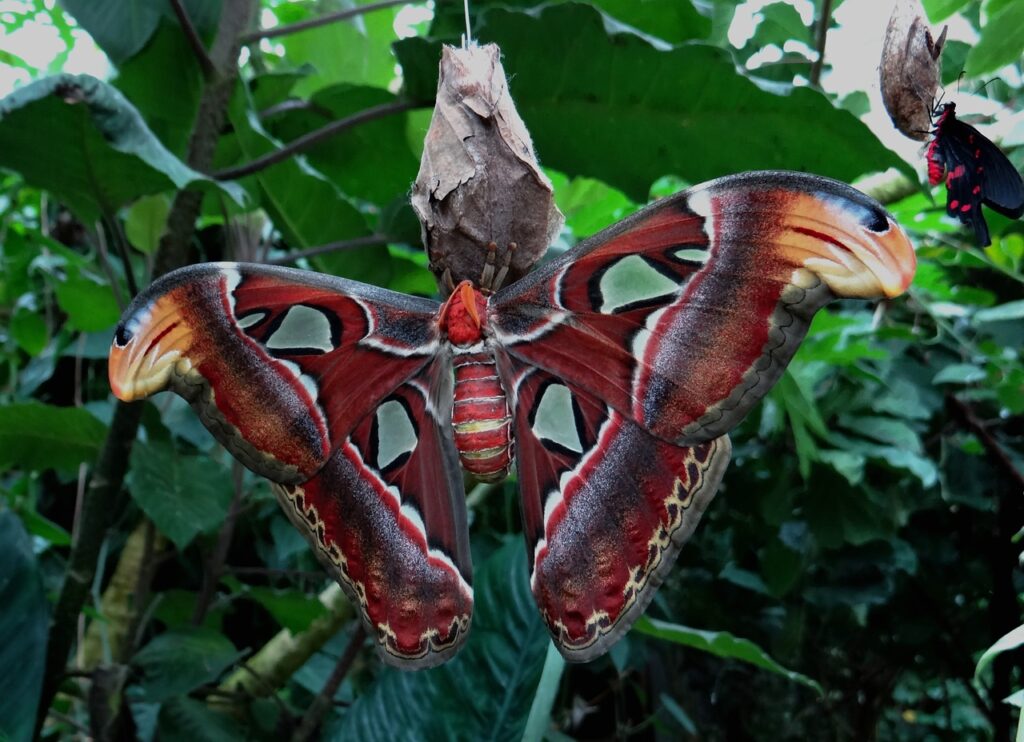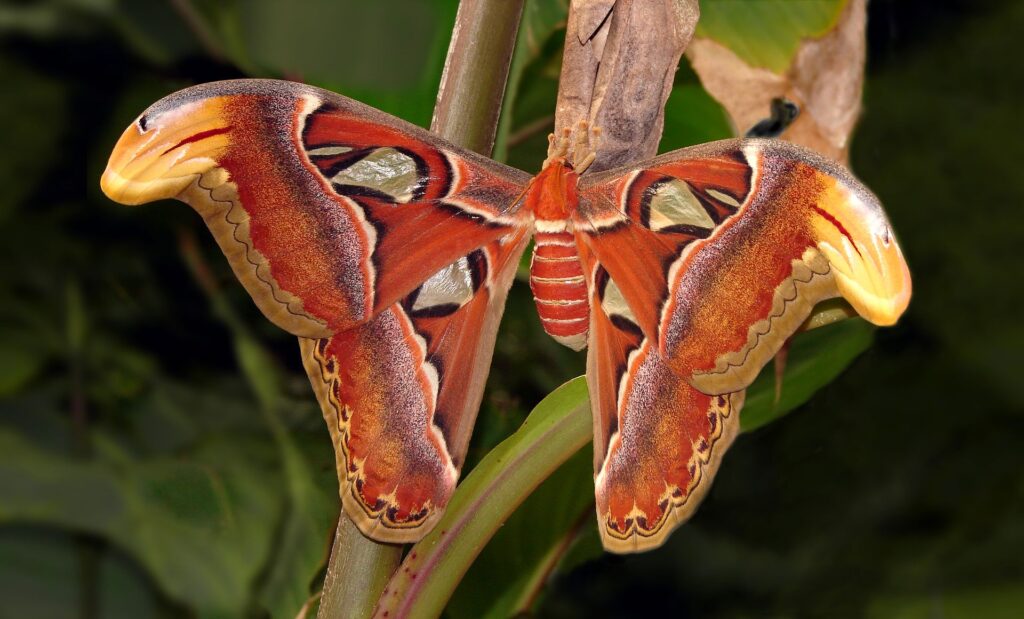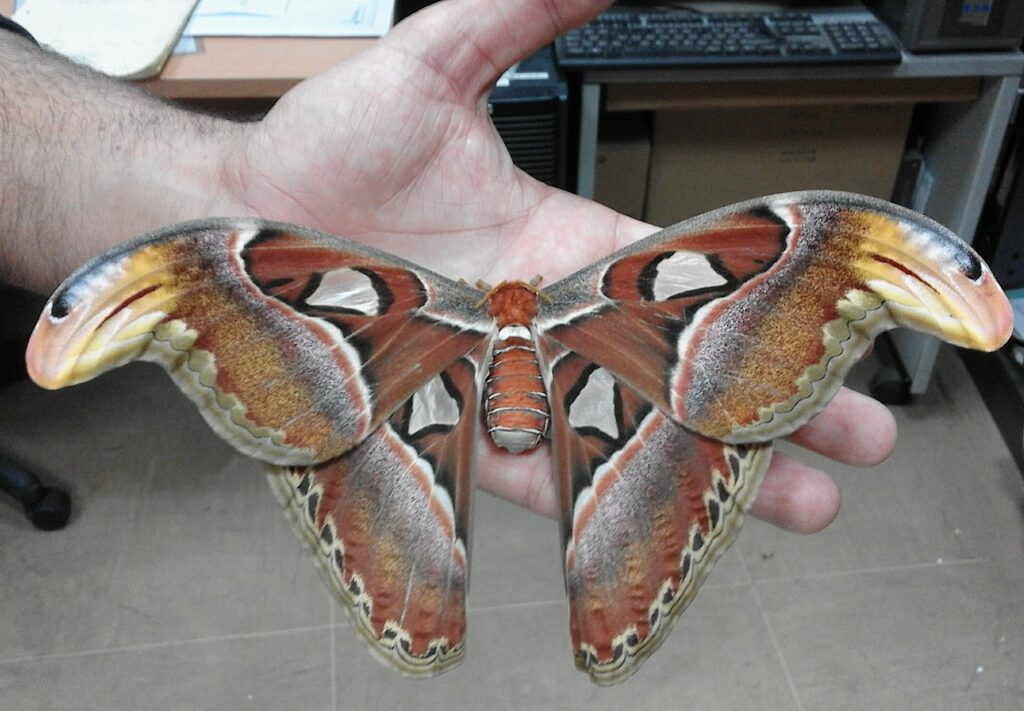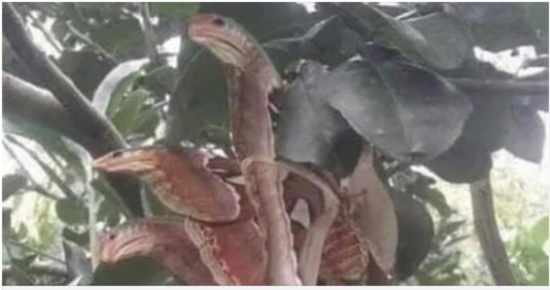Many amazing and fascinating animals inhabit the natural world including the planet Earth. It’s fascinating to watch how different organisms interact with one another and adapt to their surroundings in order to survive and maintain their ecosystems in balance.
As a result, when I saw photographs of three “angry snakes” sheltering in a tree, I was obviously intrigued. And I’m not the only one who has been deceived by these wonderful photographs.

A collection of three serpents in a tree can send shivers down anyone’s spine. Seeing just one serpent in a tree can be terrifying. But, thankfully, the eye-catching images aren’t of snakes; they’re of something entirely else.
Biodiversity refers to the immense diversity of species present in nature, which number in the millions. Each species serves a specific function within its environment. Several animals and plants have acquired incredible adaptations and survival tactics over time.
Some insects, for example, have evolved camouflage colors to blend in with their surroundings and avoid predators, whereas others have developed toxic substances to defend themselves against predators.
Images of three irate-looking “snakes” began to circulate online, bringing this fact to light even further. Rob Allam shared a perplexing image on Twitter in 2021 that appeared to depict three angry-looking “serpents” lurking in a tree.
Users immediately realized, however, that the story was more complicated than it appeared.

The trio of “snakes” is actually only a fragment of two different species of Atlas moth wings joined together to create an optical illusion.
This fascinating insect, found exclusively in Asia’s rainforests, has the odd ability to approximate the appearance of a snake. With a wingspan of up to 24 cm (9.4 in) and a wing surface area of more than 160 cm2 (25 in2), the Atlas moth is one of the largest Lepidoptera species.
The Atlas moth’s body is noticeably larger than its wings, which are significantly smaller. Carl Linnaeus discovered one of the largest insects on the planet in 1758. It receives its name from the Greek mythological Titan Atlas because of its massive size.

Rob, a Twitter user, provided the popular image with the explanation:
“Attacus Atlas is one of the largest butterflies in the world, and it only lives for two weeks as an adult.” “During this stage, its primary goal is to lay eggs and protect them until they hatch, all while disguised as a snake,” he wrote.
Many social media users first had difficulty understanding that the thing in question was, in fact, a moth.
“That disguise is really good,” remarked one user.
Another user was perplexed, asking, “How is that top one, not an actual snake?” If it didn’t look like I planned to whip it with a broom, this moth would live longer.”
Atlas moths, contrary to popular opinion, are not strong or steady flyers. To conserve energy, these moths prefer to sleep during the day and fly vigorously at night.
When the Atlas moth detects danger, it falls to the ground, writhes, and purposely flaps its wings to simulate the appearance of a snake’s head, according to the National History Museum.

To witness the awe-inspiring presence of the Atlas moth, one would most likely need to travel to Asia’s tropical jungles. However, Atlas moths have been spotted in other parts of Europe and the United States.
The BBC reported a remarkable occurrence involving a gigantic Atlas moth in 2012, reporting that it had been sighted on a windowsill in Ramsbottom, Greater Manchester. Because of the size of the moth, the family that discovered it initially mistook it for a bat. It is believed that the uncommon species escaped from a private collection. Unfortunately, it died soon after being discovered.
In July 2022, another Atlas moth specimen was photographed in Bellevue, Washington, which is a highly rare event. This was a historic occasion because it was the first time this species has been seen in the United States. In 2022, another was discovered in Sweden.

“This is a ‘gee-whiz’ type of insect because it is so large,” Sven Spichiger, the state Agriculture Department’s managing entomologist, told NBC News. ‘
“Even if you’re not looking for insects, this is the type that people get their phones out and take pictures of — they’re that striking,” he added.

If I stumbled across this wonderful animal, I would most likely be filled with admiration and surprise. My initial instinct would be to grab my camera and record the scene in order to remember the occasion. However, if I noticed that it was starting to resemble a snake’s head, I would keep a safe distance.








Leave a Comment